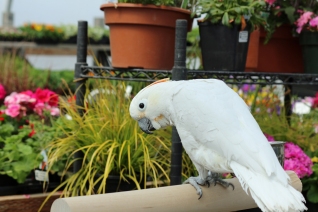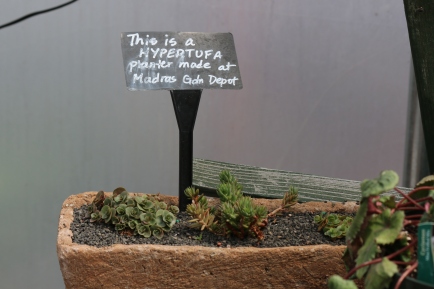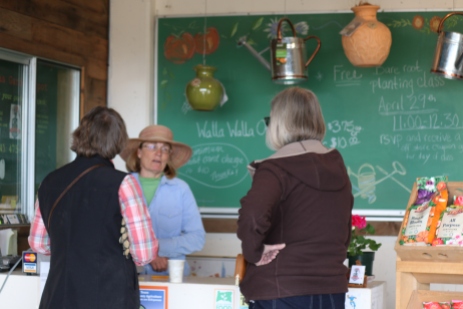I’m carrying a camera and entering Bend’s historic Drake Park, which is adjacent to companion landmarks that represent the city’s frontier era. Strolling here fuels my fantasies about the city’s early history and its growing pains. In my imagination old Bend lives again. I look around and imagine how I might have felt living here early in the 20th Century, as this speck of a place became a city, and through its following years as home to huge lumber mills that brought prosperity.
Many early-Oregon citizens were educated. Portland’s engaged population comprised the state’s most powerful voice. Little “Farewell Bend” was semi-isolated east of the Cascade Mountains. Some recent Oregonians had chosen independently to move west. Others had been beckoned by the 1862 Homestead Act which encouraged adventurers, including single women, to go west and earn “160 acres of public land”. Central Oregon’s complex environment and demanding soils required diligent physical labor. Homesteaders who found the challenges too difficult and unrewarding, and tossed in the towel, often gravitated to Bend, Portland, or Seattle.
Throughout history, movers and shakers have left us solid evidence of their dreams, creativity, and powerful personalities. Often, in Drake Park I pause to study plaques that immortalize Bend’s almost-earliest settler, the iconic Alexander Drake. His creative vision, talent, and affluence initiated a brand new city.

The Drakes joined Central Oregon’s tiny pioneering population, after leaving the eastern states and its lumber mill industry and reaching the west in a horse-drawn wagon. Drake, an entrepreneur who understood the lumber business and the value of publicity, knew that eastern investors would appreciate the west’s massive forest lands. An investor himself, he could see the financial potential in a large expanse of land with mature pines. At Central Oregon’s Deschutes River, he found a remote place called “Farewell Bend”, and a huge expanse of undeveloped land loaded with giant ponderosa trees.

Around 1900, Farewell Bend had few residents. Drake purchased farmlands to acquire property on both sides of the River. The Drakes loved the area, and selected a beautiful spot near one of the River’s bends, where they built a roomy “Lodge”.

The Drake Lodge, Deschutes History Museum Photo
Drake also built a lumber mill, powered by water, south of his anticipated township. He then surveyed and platted the city-to-be, locating it near the River and his Lodge.

“Farewell Bend” was a distinctive spot along the Deschutes River, where traveling convoys often separated and took leave to continue in different directions. Travelers approaching Farewell Bend from different directions identified it as a meeting place. Drake wanted to name his new city Farewell Bend, but the Post Office already had a Farewell Bend so shortened Drake’s city to “Bend”.

A River bend beside Drake’s Lodge site, flow from west turns north, author’s photo
Central Oregon’s early mills, lacking a railroad, couldn’t ship lumber products over distances. Thus Bend’s mills were local businesses operating with water power and small numbers of workers.

Drake Lodge Site Marker, Deschutes History Museum
Central Oregon could not grow significantly, in population or prosperity, without an operating railroad capable of supporting a major logging industry. Rails would have to come across complex and mountainous territory from Hood River to Bend. Railroad wars were common in the west where competition to lay rails often became wildly violent. Finally, in 1908, at Drake’s urging, documentation, and persistent predictions of business potential, two railroads began laying rail toward Central Oregon and competing to reach Bend.

Drake Lodge Site Marker, Deschutes History Museum
New rails being laid from Hood River south toward Bend spurred local economies along the projected route. Eastern speculators interested in Bend invested, sight-unseen, in property. The already-existing Bend anticipated explosions in population and wealth. On Wall Street, commercial establishments dominated, and one block away on Bond Street, saloons and brothels entertained Bend’s wild and wooly crowd.
In 1911, the tracks reached Bend, and promptly, giant lumber mills followed. For the young city, rails and mills brought the prosperity that Drake had projected. Bend’s big mills had enormous capacity and high production. In those early industrial days, citizens complained about witnessing the massive destruction of Bend’s surrounding forests. Those early mills did gobble vast local natural resources, but their industrial age capabilities were considerably less invasive and destructive than the technologies that worry us today.
Drake achieved his biggest goals, and today an historical plaque, and three surviving elderly Ponderosas, mark for us the location of his Lodge site. The Drake Lodge was razed in the 1950s before anyone imagined a value in saving old structures. But Bend never forgot the Drakes. The Deschutes, and one of its impressive bends, are centerpieces in the beautiful Drake Park, a popular expanse surrounded by lovely old homes.



Early settlers established lumber mills, the newspaper, and shops. The city’s growth attracted dentists, doctors, and lawyers. The wealthiest built large homes near Drake’s Lodge and close to downtown. Today some of those homes are registered historic sites, well-maintained, and boast official markers. Locals and tourists enjoy recreating in Drake Park, and nearby, admiring elegant old homes while strolling through history.
I’m leaving the Park and crossing over to Congress Street, where like many I’m particularly drawn to the 1911 home of Bend’s very famous newspaperman, George Palmer Putnam. That handsome young man’s turn-of-the-century adventures in Central Oregon were swashbuckling.
George Palmer Putnam, Deschutes History Museum Photos
Putnam arrived after spending time in Northern California where he went to school, climbed Mt. Whitney, and met his finance, Dorothy Binny, heiress to the Crayola fortune. Putnam was young, tall, strong, had attended Harvard and Berkley, and hailed from eastern buckets of wealth. His family long had been successful in the publishing business. He and Dorothy were natural counterparts.

George and Dorothy Putnam, Deschutes History Museum Photo
He could have chosen to go east and assume a publishing career, but in 1909 became attracted to Oregon’s ongoing, often violent battle between the railroad barons competing for rail ownership from the Columbia River to Bend. Railroad workers had lain rail over complex territory clear to Shaniko, but reaching Bend required another 100 miles of rail through mountainous territory. The winning railroad would acquire the major prize of hauling Bend’s lumber products to markets everywhere.
On his initial trip to Bend, Putnam’s stressful journey from the Columbia River into the heart of Central Oregon began with a day-long train ride to Shaniko where the tracks ended. The final leg of his journey, that additional 100 miles to Bend, were 20 hours of unrelenting misery in a horse-drawn transport.
Putnam described his final lap:
One hundred miles of staging–five hundred and twenty-eight thousand feet of dust, if it be summer, or mud, if it be winter; Heaven knows how many chuck holes, how many ruts, how many bumps! The ride, commencing at eight one evening, ended about six the next. No early Christian martyr was more thoroughly bruised and stiffened at the hands of Roman mobs than the tenderfoot traveler on the memorable Shaniko-Bend journey! And there were so many rich possibilities–nay, probabilities–of diversion. Winter blizzards on Shaniko Flats were to be expected, while after thaws the heavy stages “bogged down” with aggravating regularity.
(From In The Oregon Country, by George Palmer Putnam, 1915, G.P. Putnam’s Sons.)
Soon after arriving in Bend, Putnam signed onto The Oregonian to report on the railroad wars. His coverage of railroad battles and rail progress captured all the gun-slinging frontier excitement in that mad race between transportation giants. In his reporting, Putnam walked with the rail-layers and on foot covered the entire distance from Hood River to Bend.
Shortly after he began working for the Bend Bulletin, Putnam purchased it, becoming its editor, publisher, and regular correspondent. He collaborated with other city leaders, was a founding member of Bend’s Emblem Club, an early version of the Chamber of Commerce. His paper influenced community decisions, and eventually he upgraded it from a weekly to a daily.
In 1911, there were two milestones: the railroad finally reached Bend; and also, after their 10-month engagement, Putnam married Dorothy, his tall, athletic east-coast fiance.

Dorothy in wedding dress, Deschutes Historical Museum Photo
The couple through correspondence mutually had designed their new house. He built it at the end of Congress Street, near his downtown “Bulletin” office. They named their large, brown-shingled bungalow “Pinelyn”. Nowadays thick plant growth obstructs a lens trying to capture Pinelyn.
Putnam House Today, Author’s Photos
The internet offers clearer images.
Air B&B Photos
Natl. Historic Landmark Photo Natl. Registry of Historic Places Photo
The Putnams were outdoorsy and competitive. They camped, fished, canoed, and climbed the nearby Cascades. After the birth of their son, David, they included him in their adventures. Dorothy loved Bend, became a civic and cultural leader, and among other activities raised funds for cancer–then a little-known disease. She brought in speakers who supported the suffrage movement–and in 1912, the “inland city” of Bend was critical in winning the expanded “right to vote”. She turned Pinelyn into a busy social center with dinner parties, entertainments, and costumed gatherings. On a lot beside their home, the couple built a neighborhood tennis court.

The Putnams at Pinelyn, Deschutes History Museum Photo
In 1912, the 25-year-old “boy editor” became Bend’s second mayor, replacing the mayor-elect who died after falling from a second-story window. Under Putnam’s watch, Bend became more civil. The prostitutes began leaving, gambling became more orderly and unobtrusive, and saloons kept stricter hours, discouraged drunkenness and disallowed fights. Mayor Putnam also okayed Bend’s first sewer lines.
In 1916, Putnam left Bend, moving to Salem as secretary to Oregon’s Governor. In 1919, after his father died, he reluctantly returned to the East Coast and entered his family’s publishing business. Putnam for many years retained his Bend home, while becoming a famous eastern publicist. Later he also married Amelia Earhart–but that’s another story.
Looking back through time revitalizes the successes of those who followed their dreams, believed in their skills, and used their voices. They’re inspirational, creative, and enjoyed good living. Bend today, a sophisticated city, still retains a lingering flavor of old frontier days.
Bend is fun, but what a great history to have witnessed, first-hand, in its early years!
Diana Levey, on June 7, 2017
Email: TrailRiderInCentralOregon@aol.com
Next steps: please (1) leave feedback, and (2) tap the “follow” button for notifications of upcoming blogs.

































